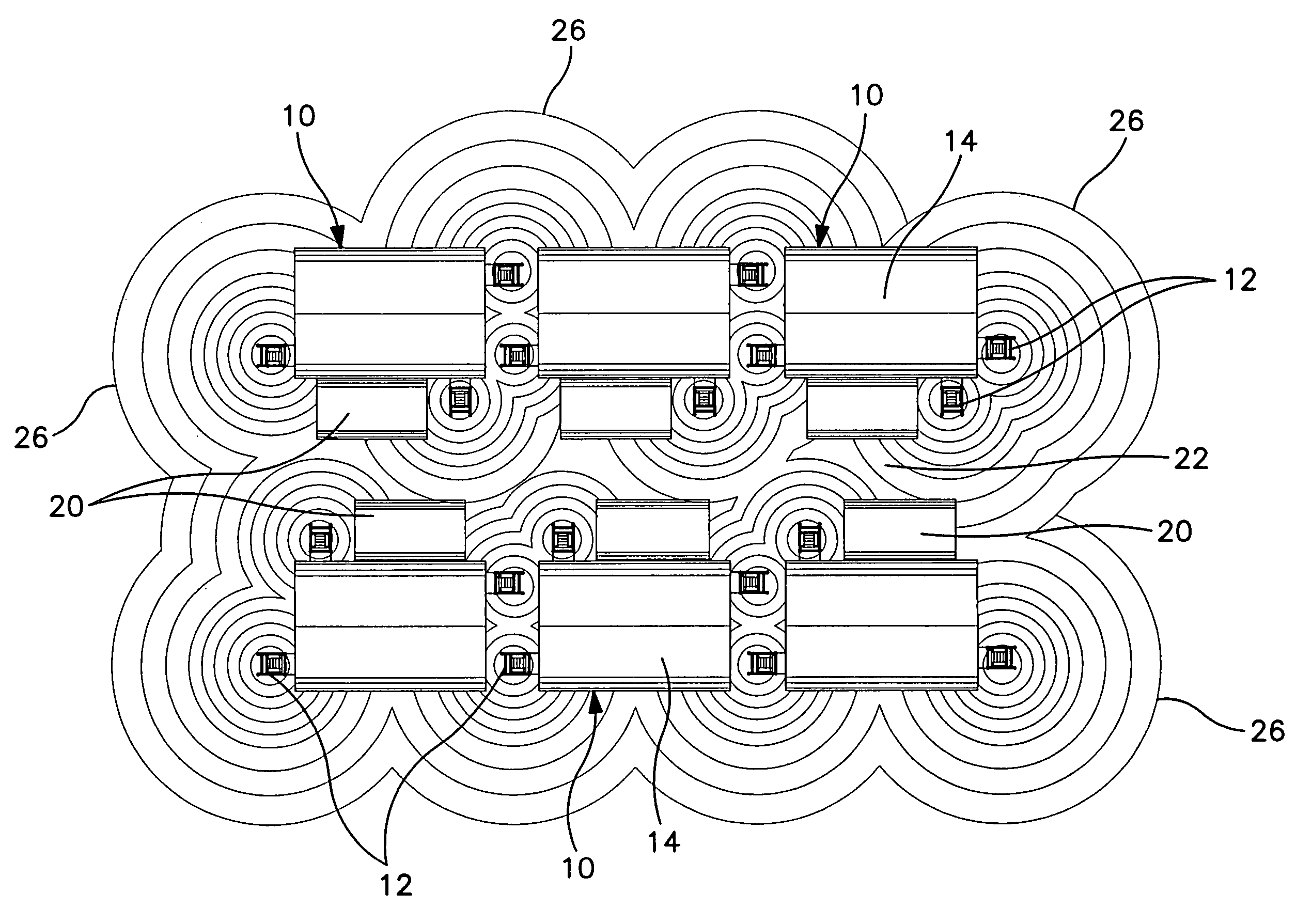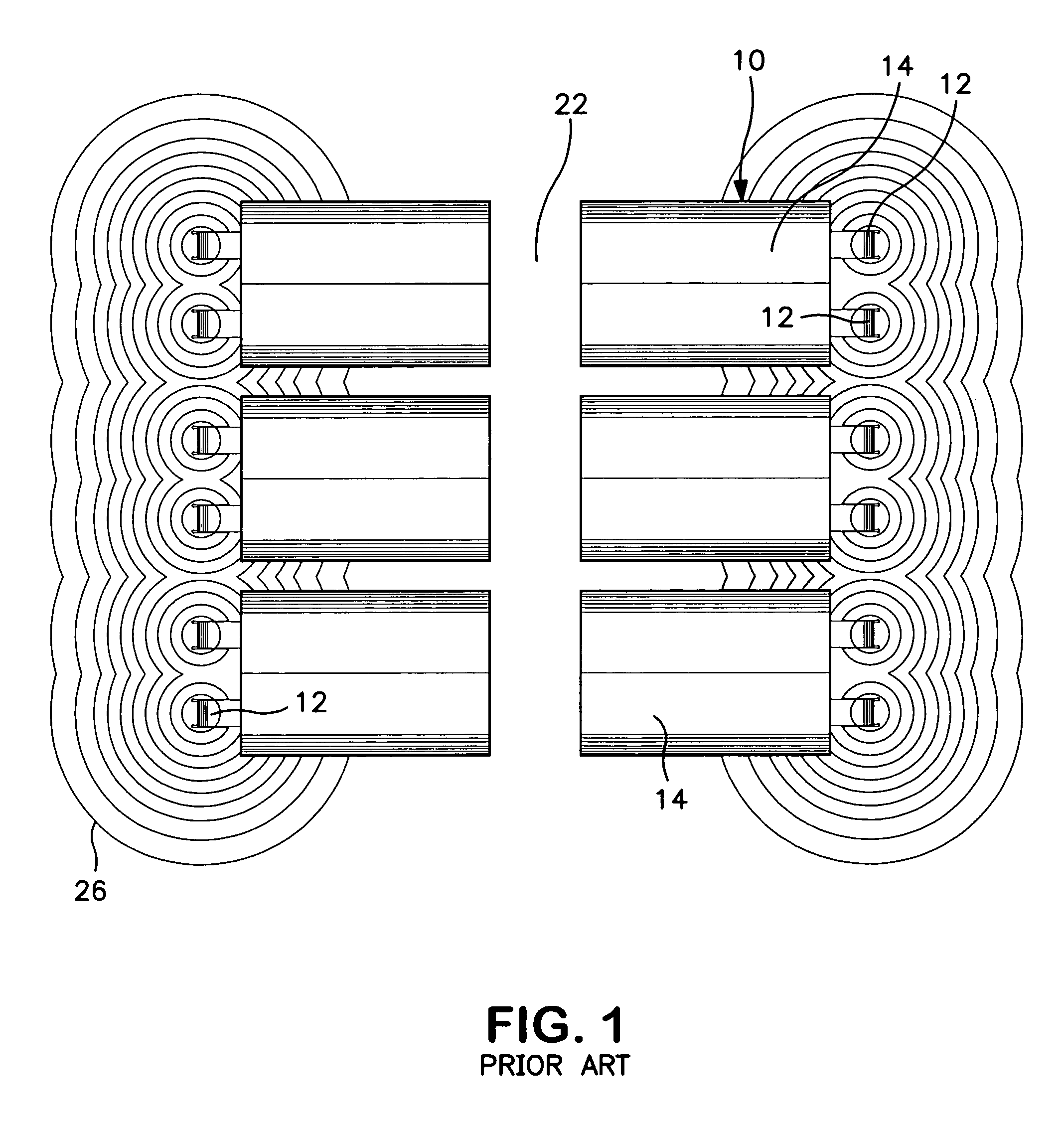Method of minimizing cross contamination between clean air rooms in a common enclosure
a technology of clean air and common enclosure, which is applied in the direction of auxillary pretreatment, heating types, separation processes, etc., to achieve the effect of increasing the portion of refiltered air and increasing the efficiency of the filter
- Summary
- Abstract
- Description
- Claims
- Application Information
AI Technical Summary
Benefits of technology
Problems solved by technology
Method used
Image
Examples
Embodiment Construction
[0018]Referring now to the drawings in detail, FIG. 1 shows a conventional arrangement of a group—in this case, six—of portable clean air rooms 10 arranged in two parallel rows and with each clean room equipped with two generally identical blower units 12 located at the end wall opposite the access corridor 13 between the two rows. It is pointed out that the prior art clean air rooms that employed such arrangements may only employ a single blower unit or as may as three blowers for each clean air room in a group. The clean air rooms 10 may be of the type disclosed in my prior U.S. Pat. No. 4,804,392 mentioned above, with each room 10 consisting of an open, self supporting tubular framework covered with vinyl sheet material forming a top wall 14, end walls 16 and sidewalls 18. An access opening (not shown) in one sidewall or end wall facing corridor 22 is enclosed by an air lock entrance 20, as best seen in FIG. 2.
[0019]The in-line arrangement of the clean rooms 10 in two spaced para...
PUM
| Property | Measurement | Unit |
|---|---|---|
| flexible | aaaaa | aaaaa |
| volume | aaaaa | aaaaa |
| area | aaaaa | aaaaa |
Abstract
Description
Claims
Application Information
 Login to View More
Login to View More - R&D
- Intellectual Property
- Life Sciences
- Materials
- Tech Scout
- Unparalleled Data Quality
- Higher Quality Content
- 60% Fewer Hallucinations
Browse by: Latest US Patents, China's latest patents, Technical Efficacy Thesaurus, Application Domain, Technology Topic, Popular Technical Reports.
© 2025 PatSnap. All rights reserved.Legal|Privacy policy|Modern Slavery Act Transparency Statement|Sitemap|About US| Contact US: help@patsnap.com



